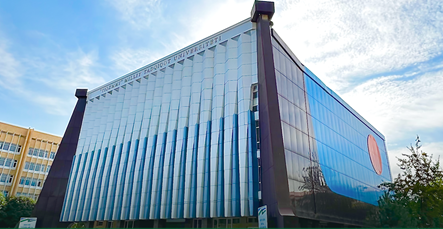THE CREATIVE AND ARTISTIC SKILL IN CREATING NATIONAL HEROES IN "DAYS GONE BY"
Keywords:
discovery, culture, socio-political, national hero, intellectual, emotional, literature, impact, essential.Abstract
The concept of national heroes has been a central theme in historical narratives, literature, and art for centuries. These figures often represent the ideals, virtues, and aspirations of a society. The creative and artistic skills involved in crafting these heroes, particularly in works from earlier historical periods, reveal much about the socio-political, cultural, and emotional landscapes of the time. Works from past centuries, whether they be literary texts, artworks, scientific discoveries, or philosophical treatises, have played a pivotal role in shaping contemporary culture, thought, and progress. These works, often referred to as part of the "cultural heritage," represent not only the intellectual achievements of their time but also serve as fundamental building blocks for future developments. This article explores the artistic process and cultural context behind the creation of national heroes in works of the "days gone by," examining how they were portrayed through literature, visual arts, and performance. By delving into the creative mechanisms behind these figures, we can better understand their impact on national identity and collective memory. This article investigates the enduring importance of works from "days gone by," analyzing their role in preserving cultural identity, advancing human knowledge, and fostering intellectual discourse. The article argues that the legacies of past works are critical for understanding the present and shaping the future, providing essential insights into human nature, societal development, and scientific discovery.
References
Anderson, B. (1983). Imagined Communities: Reflections on the Origin and Spread of Nationalism. Verso.
Said, E. W. (1978). Orientalism. Pantheon Books.
Spivak, G. C. (1988). "Can the Subaltern Speak?" In Marxism and the Interpretation of Culture. University of Illinois Press.
Yuval-Davis, N. (2006). Intersectionality and Feminist Politics. European Journal of Women's Studies, 13(3), 193-209.
Abdulla Qodiriy. „Oʻtkan kunlar“ ham oʻtkan kunlar" tanqidi ustida baʼzi izohlar. Sharq haqiqati, 1929-yil, 218-son
Sotti Husayn. „Oʻtkan kunlar“ ham oʻtkan kunlar“ mavzusi bilan boshlangan adabiy-tanqidiy maqolalar toʻplami. Sharq haqiqati, 1929-yil, 120, 122, 123, 125, 130, 132, 137, 138, 145, 153, 154, 169, 199, 201, 206-sonlari; 1930-yil, 9, 14, 17-yanvar kungi sonlari.
Habibulla Qodiriy. Otamdan xotira (Otam haqida). Abdulla Qodiriy asarlari toʻplami, „Adibni xotirlab“ qismi (5-kitob). Info Capital Group, Toshkent, 2017. 172–173-betlar
"Oʻtkan kunlar" roʻmoninig 1926 va 1933-yillar nashrlaridagi tafovutlar. Abdulla Qodiriy, Oʻtkan kunlar, Mehrobdan chayon. Gʻafur Gʻulom nomidagi Adabiyot va sanʼat nashriyoti. Toshkent, 1994-yil, 640-bet
Habibulla Qodiriy. Otamdan xotira (Otam haqida). Abdulla Qodiriy asarlari toʻplami, „Adibni xotirlab“ qismi (5-kitob). Info Capital Group, Toshkent, 2017. 181–182-betlar
Sirojiddin Ahmad. Istibdod zamonining qiyofasi („Qodiriyshunoslik“ka bir nazar). Abdulla Qodiriy asarlari toʻplami, „Obid ketmon“ (4-kitob). Info Capital Group, Toshkent, 2017-yil, 278-bet.
Uzbekistan National News Agency. „Uzbekistan Embassy presents Abdullah Qodiriy’s “Bygone Days”“. Qaraldi: 2019-yil 30-dekabr.
Национальное информационное агентство Узбекистана. „В США издан роман Абдуллы Кадыри «Минувшие дни» на английском языке“. https://uza.uz/ru. Qaraldi: 07 января 2020.
“«O‘tkan kunlar» romani ilk bor arab tilida nashr etildi“. https://kun.uz. Kun.uz. Qaraldi: 2024-yil 24-aprel
Madalieva, D. B. (2019). LEARNING ASPECTS OF ORIGINATING THE TERMS OF ACCOUNTING IN THE LINGUISTIC RESEARCH. Экономика и социум, (11 (66)), 58-61.
Nigmatovna, U. F., & Qizi, B. M. O. (2024). MANAVIY BARKAMOL AVLODNI TARBIYALASH MASALALARI. Science and innovation, 3(Special Issue 32), 160-164.
Published
Versions
- 2025-03-14 (2)
- 2025-03-07 (1)










